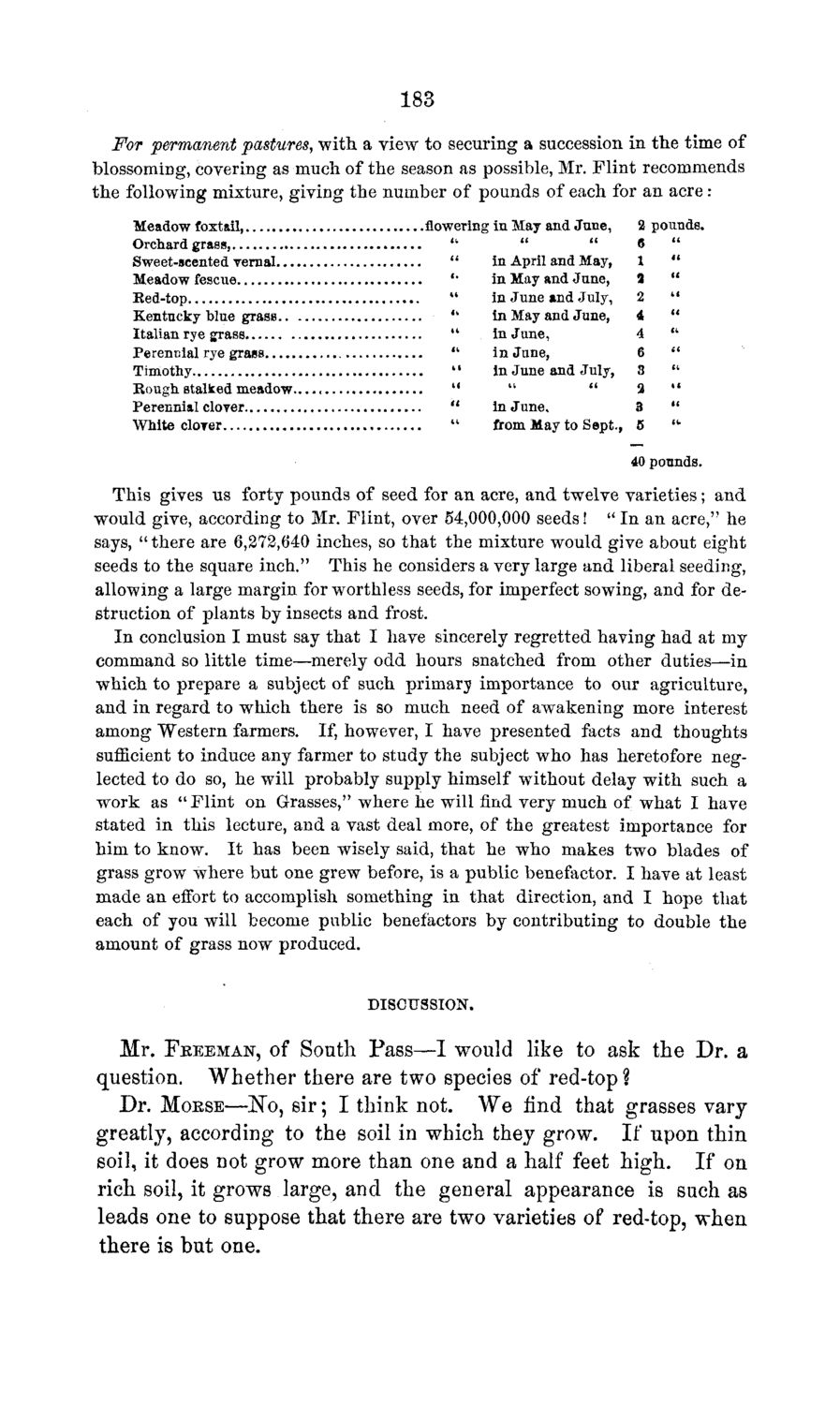| |
| |
Caption: Board of Trustees Minutes - 1869
This is a reduced-resolution page image for fast online browsing.

EXTRACTED TEXT FROM PAGE:
183 For permanent pastures, with a view to securing a succession in the time of blossoming, covering as much of the season as possible, Mr. Flint recommends the following mixture, giving the number of pounds of each for an acre : Meadow foxtail, Orchard grass, Sweet-scented vernal Meadowfescue Red-top Kentucky blue grass Italian rye grass Perennial rye grass Timothy Rough stalked meadow...., Perennial clover White clover flowering " " '• " " " " *• " " " in May and June, " " in April and May, in May and June, in June and July, in May and June, in June, in June, in June and July, " " in June, from May to Sept., 2 pounds. « " 1 " 3 " 2 *' 4 " 4 " 6 " 8 " 2 " 3 " 5 "• 40 pounds. This gives us forty pounds of seed for an acre, and twelve varieties; and would give, according to Mr. Flint, over 54,000,000 seeds! " In an acre," he says, " there are 6,272,640 inches, so that the mixture would give about eight seeds to the square inch." This he considers a very large and liberal seeding, allowing a large margin for worthless seeds, for imperfect sowing, and for destruction of plants by insects and frost. In conclusion I must say that I have sincerely regretted having had at my command so little time—merely odd hours snatched from other duties—in which to prepare a subject of such primary importance to our agriculture, and in regard to which there is so much need of awakening more interest among Western farmers. If, however, I have presented facts and thoughts sufficient to induce any farmer to study the subject who has heretofore neglected to do so, he will probably supply himself without delay with such a work as " Flint on Grasses," where he will find very much of what I have stated in this lecture, and a vast deal more, of the greatest importance for him to know. It has been wisely said, that he who makes two blades of grass grow where but one grew before, is a public benefactor. I have at least made an effort to accomplish something in that direction, and I hope that each of you will become public benefactors by contributing to double the amount of grass now produced. DISCUSSION. Mr. FREEMAN, of South Pass—I would like to ask the Dr. a question. Whether there are two species of red-top ? Dr. MORSE—No, sir; I think not. We find that grasses varygreatly, according to the soil in which they grow. If upon thin soil, it does not grow more than one and a half feet high. If on rich soil, it grows large, and the general appearance is such as leads one to suppose that there are two varieties of red-top, when there is but one.
| |